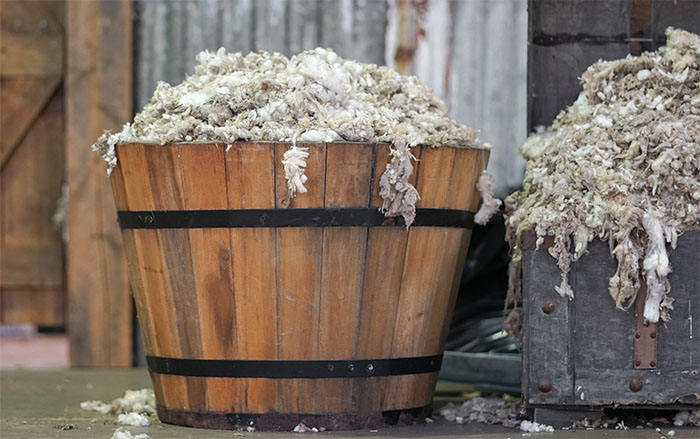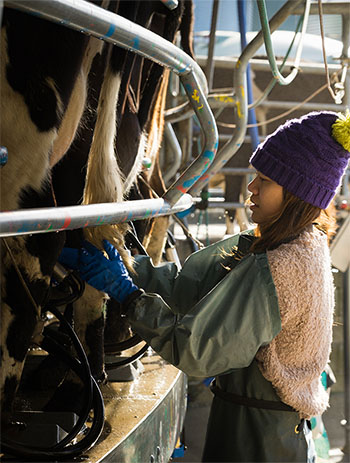Food and fibre
On this page

Situation
The Food and Fibre sector is key not only to the economy of Otago, but to our character and our future. The sector is diverse and nuanced; it spans viticulture and horticulture in inland Otago, to dairy and sheep and beef (pastoral farming) in Coastal Otago. Spurred by buoyant international commodity prices, some parts of the sector have been remarkably resilient throughout the COVID-19 pandemic to date, while others in the sector face significant labour and skills shortages and reduced ability to get export product to market. The sector faces numerous structural challenges going forward, many of which will require collaborative, innovative and well-planned solutions along with a decent helping of the ingenuity that continues to be the backbone of our farming community.
The Food and Fibre sector provides a large source of employment across Otago, accounting for 10,347 jobs or 8.0% of the region’s employment. There are a further 4,909 further processing jobs that add value to these primary products by converting them into higher value products ready for retail and wholesale trade. In 2021, the sector contributed $1,025 million towards GDP in the Otago Region, amounting to 7.1% of our total economic output.
An important feature of the sector is its large swings in seasonal labour demand which is particularly evident in horticulture and viticulture. During harvest times, employment levels can spike to five to eight times higher than their winter trough; labour demand for these industries in Otago peaks at 5,710 workers during summer and falls to as low as 901 workers during winter. Seasonality within pastoral farming systems also creates challenges such as obtaining staff for sileage making and calving. This seasonal swing can create significant stress and affect the wellbeing, particularly of those employers, in the sector.
 The sector is also defined by sub-regional differences; almost half (48%) of all employment in the sector across Otago is in coastal Otago, with a further 37.6% of employment in inland Otago. As a result of Dunedin’s boundaries stretching across a significant geographical area, one in every seven jobs (14.3%) in Otago’s Food and Fibre sector are in the Dunedin sub-region.
The sector is also defined by sub-regional differences; almost half (48%) of all employment in the sector across Otago is in coastal Otago, with a further 37.6% of employment in inland Otago. As a result of Dunedin’s boundaries stretching across a significant geographical area, one in every seven jobs (14.3%) in Otago’s Food and Fibre sector are in the Dunedin sub-region.
The Food and Fibre sector has an increasing share of workers aged 65 and above. While this metric has seen some positive change, the sector’s ageing workforce will remain a salient issue. People in the Food and Fibre sector are twice as likely to be self-employed as people working across the Otago labour market, although this has fallen significantly over recent years as the sector has corporatised. The use of self-employed rural contactors is significant in the horticultural sector.
Food and Fibre workers tend to work relatively long hours, with high proportions of people working 40-49 hours and 50-59 hours. From an earnings perspective, despite such long hours, average wage earnings in the sector are low, relative to the wider Otago labour market. Wages in the sector are reflective of employees but will represent an undercount of earnings for the self-employed who also build up capital in the value of their property. Just under 70% of the workforce is male, a proportion that has remained consistent over the last 20 years.
Complications
Across the region
- We are seeing the converging challenges of an ageing workforce and issues with attraction and retention.
- There is a need for more transparent career pathways, better workforce mapping and improved guidance on financial literacy to assist young people looking to decide to work in primary industries.
- The sector is feeling the ongoing effects of the pandemic, facing sharp skills shortages and supply chain issues.
- The implications of carbon reduction, the impact of technology challenges and piecemeal regional broadband access, are significant issues, along with the increasing difficulty of asset transfers.
Employers told us
- Skill and labour shortages are also creating barriers, constraints and issues at an employer level.
- These challenges are exacerbated by competition for labour elsewhere, as well as overlapping seasons between different parts of the agricultural sector.
- Border closures have significantly reduced the available pool of the short-term labour that was previously used to fill seasonal demand.
- Housing shortages can also create recruitment challenges within the sector, with rentals often in short supply in rural towns and communities. Some employers provide housing, but this is capital intensive. Ensuring accommodation provided on farms and orchards is brought up to healthy homes standards has created some pressure, particularly for seasonal worker accommodation.
Workers told us
- Some Food and Fibre sector employees work extremely long hours, which can have negative impacts on staff wellbeing and risks burnout. There are also health and safety risks associated with fatigue.
- There are large numbers of people in the sector without any formal qualification or skills development pathway. A high prevalence of self-employment also creates challenges for the accessing of training and career development opportunities.
- As New Zealand becomes increasingly urbanised there is a lack of understanding about what careers in the agricultural sector look like and a reluctance by some to work within the sector.
- Environmental concerns, the isolation of working in rural areas, and perceptions that the sector does not readily adopt technology or support workers in having a good work-life balance, feed into this.

